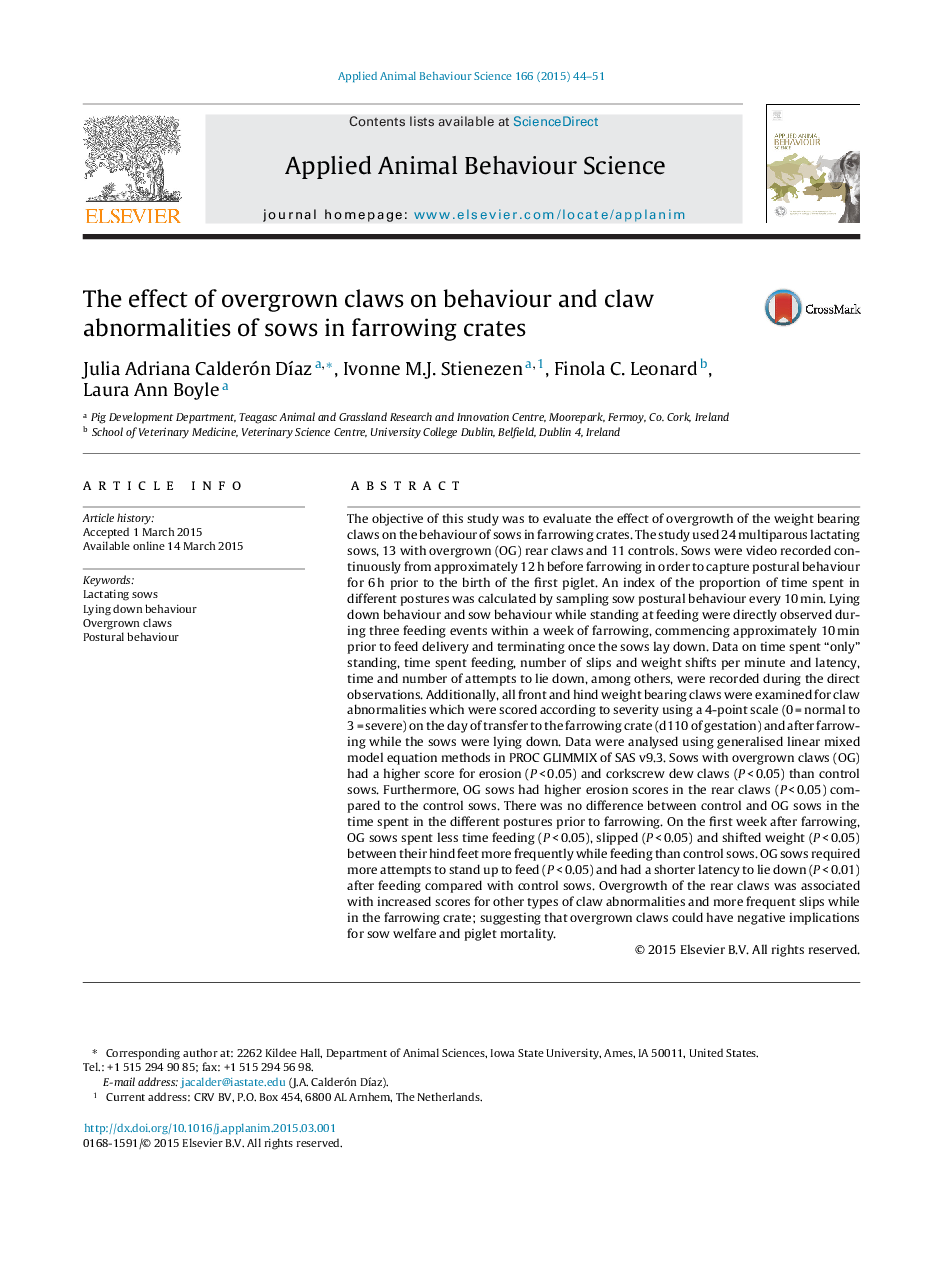| کد مقاله | کد نشریه | سال انتشار | مقاله انگلیسی | نسخه تمام متن |
|---|---|---|---|---|
| 6379582 | 1625340 | 2015 | 8 صفحه PDF | دانلود رایگان |
- We evaluated the relationship of overgrown claws on other types of claw lesions.
- We examined the effect of overgrown claws on behaviour of sows in farrowing crates.
- Sows with overgrown claws are more prone to other claw lesions.
- Sows with overgrown claws spend less time standing and eating.
- Overgrown claws did not affect postural and lying-down behaviour.
The objective of this study was to evaluate the effect of overgrowth of the weight bearing claws on the behaviour of sows in farrowing crates. The study used 24 multiparous lactating sows, 13 with overgrown (OG) rear claws and 11 controls. Sows were video recorded continuously from approximately 12Â h before farrowing in order to capture postural behaviour for 6Â h prior to the birth of the first piglet. An index of the proportion of time spent in different postures was calculated by sampling sow postural behaviour every 10Â min. Lying down behaviour and sow behaviour while standing at feeding were directly observed during three feeding events within a week of farrowing, commencing approximately 10Â min prior to feed delivery and terminating once the sows lay down. Data on time spent “only” standing, time spent feeding, number of slips and weight shifts per minute and latency, time and number of attempts to lie down, among others, were recorded during the direct observations. Additionally, all front and hind weight bearing claws were examined for claw abnormalities which were scored according to severity using a 4-point scale (0Â =Â normal to 3Â =Â severe) on the day of transfer to the farrowing crate (d110 of gestation) and after farrowing while the sows were lying down. Data were analysed using generalised linear mixed model equation methods in PROC GLIMMIX of SAS v9.3. Sows with overgrown claws (OG) had a higher score for erosion (PÂ <Â 0.05) and corkscrew dew claws (PÂ <Â 0.05) than control sows. Furthermore, OG sows had higher erosion scores in the rear claws (PÂ <Â 0.05) compared to the control sows. There was no difference between control and OG sows in the time spent in the different postures prior to farrowing. On the first week after farrowing, OG sows spent less time feeding (PÂ <Â 0.05), slipped (PÂ <Â 0.05) and shifted weight (PÂ <Â 0.05) between their hind feet more frequently while feeding than control sows. OG sows required more attempts to stand up to feed (PÂ <Â 0.05) and had a shorter latency to lie down (PÂ <Â 0.01) after feeding compared with control sows. Overgrowth of the rear claws was associated with increased scores for other types of claw abnormalities and more frequent slips while in the farrowing crate; suggesting that overgrown claws could have negative implications for sow welfare and piglet mortality.
Journal: Applied Animal Behaviour Science - Volume 166, May 2015, Pages 44-51
